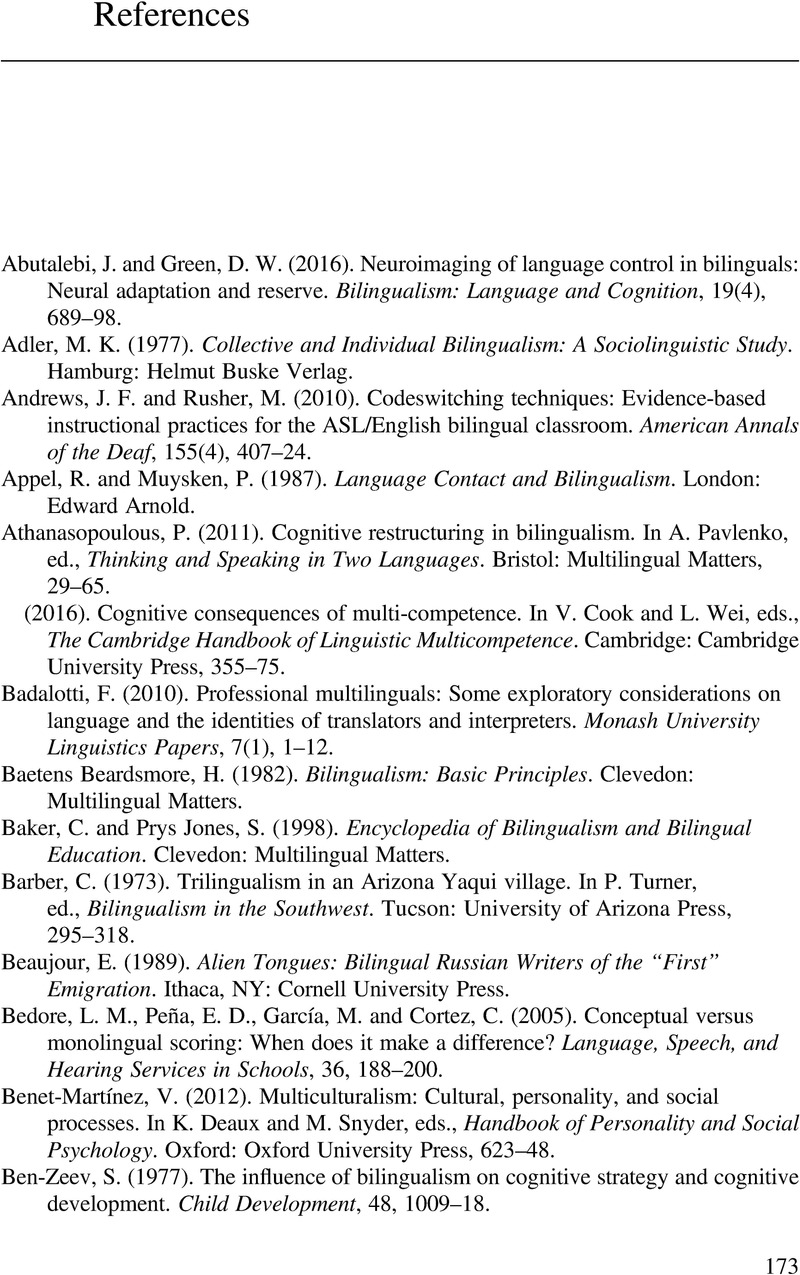Book contents
- On Bilinguals and Bilingualism
- On Bilinguals and Bilingualism
- Copyright page
- Dedication
- Contents
- Figures
- Tables
- Introduction
- 1 The Setting
- 2 A Holistic View of Bilingualism
- 3 The Bilingual’s Language Modes
- 4 The Complementarity Principle
- 5 Spoken Language Processing
- 6 Cross-linguistic Influence
- 7 Bilinguals Who Are Also Bicultural
- 8 The Bilingualism and Biculturalism of the Deaf
- 9 The Statistics of Bilingualism
- 10 Special Bilinguals
- 11 A Bilingualism Researcher’s Social Role
- Appendix The Right of the Deaf Child to Grow Up Bilingual
- References
- Index
- References
References
Published online by Cambridge University Press: 08 February 2024
- On Bilinguals and Bilingualism
- On Bilinguals and Bilingualism
- Copyright page
- Dedication
- Contents
- Figures
- Tables
- Introduction
- 1 The Setting
- 2 A Holistic View of Bilingualism
- 3 The Bilingual’s Language Modes
- 4 The Complementarity Principle
- 5 Spoken Language Processing
- 6 Cross-linguistic Influence
- 7 Bilinguals Who Are Also Bicultural
- 8 The Bilingualism and Biculturalism of the Deaf
- 9 The Statistics of Bilingualism
- 10 Special Bilinguals
- 11 A Bilingualism Researcher’s Social Role
- Appendix The Right of the Deaf Child to Grow Up Bilingual
- References
- Index
- References
Summary

- Type
- Chapter
- Information
- On Bilinguals and Bilingualism , pp. 173 - 188Publisher: Cambridge University PressPrint publication year: 2024

